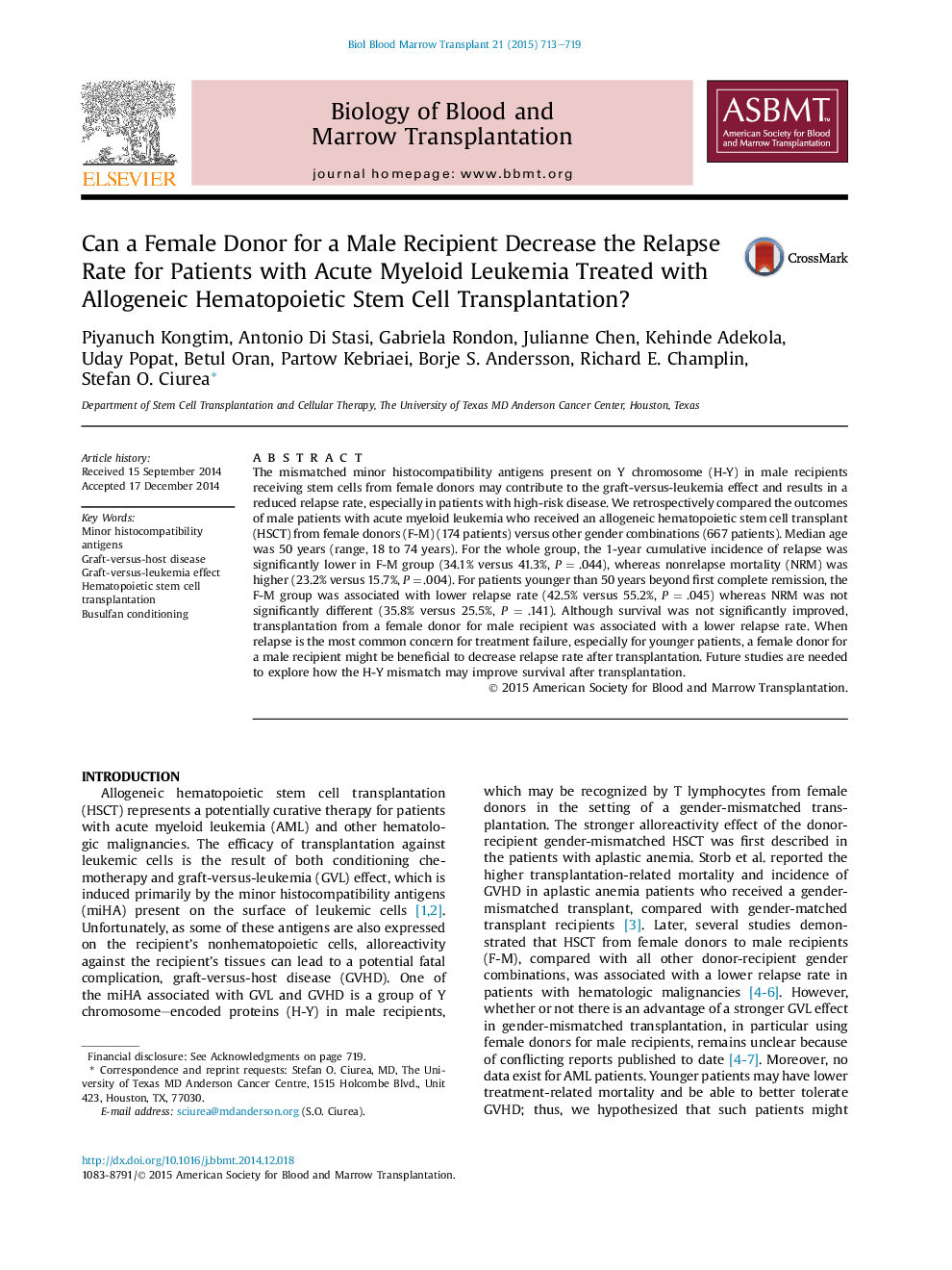| کد مقاله | کد نشریه | سال انتشار | مقاله انگلیسی | نسخه تمام متن |
|---|---|---|---|---|
| 2101456 | 1546268 | 2015 | 7 صفحه PDF | دانلود رایگان |
• Hematopoietic stem cell transplantation using female donor for a male recipient is associated with a decreased relapse rate, yet higher nonrelapse mortality
• Overall, a female donor was not associated with improved survival for patients with acute myeloid leukemia
• Younger male patients with high-risk acute myeloid leukemia may benefit from using stem cells from female donors
The mismatched minor histocompatibility antigens present on Y chromosome (H-Y) in male recipients receiving stem cells from female donors may contribute to the graft-versus-leukemia effect and results in a reduced relapse rate, especially in patients with high-risk disease. We retrospectively compared the outcomes of male patients with acute myeloid leukemia who received an allogeneic hematopoietic stem cell transplant (HSCT) from female donors (F-M) (174 patients) versus other gender combinations (667 patients). Median age was 50 years (range, 18 to 74 years). For the whole group, the 1-year cumulative incidence of relapse was significantly lower in F-M group (34.1% versus 41.3%, P = .044), whereas nonrelapse mortality (NRM) was higher (23.2% versus 15.7%, P = .004). For patients younger than 50 years beyond first complete remission, the F-M group was associated with lower relapse rate (42.5% versus 55.2%, P = .045) whereas NRM was not significantly different (35.8% versus 25.5%, P = .141). Although survival was not significantly improved, transplantation from a female donor for male recipient was associated with a lower relapse rate. When relapse is the most common concern for treatment failure, especially for younger patients, a female donor for a male recipient might be beneficial to decrease relapse rate after transplantation. Future studies are needed to explore how the H-Y mismatch may improve survival after transplantation.
Journal: - Volume 21, Issue 4, April 2015, Pages 713–719
